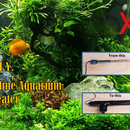Introduction: Cartesian Diver
A Cartesian diver is a classic science experiment which demonstrates the principle of buoyancy (Archimedes' principle).
The name Cartesian is a derivative of its inventors name - René Descartes, a French scientist and philosopher. It is believed to have been created by him as a toy in 1648.
I remember making one of these as a youngster, so I thought I would put it out there again for all the young kids who may not be familiar with the concept.
Supplies
Large glass jar
Balloon
Figurine - I just used a toy soldier (better still if you can find a diver).
Vessel to hold air when inverted i.e. Biro cap or similar.
Step 1: Preparing the Diver
For this experiment, I couldn't locate a toy diver, so went with the best I could find and that was a soldier.
First of all I needed to check just how buoyant he was. He floated relatively easily so I needed to add some weight to the body. He was also prone to float in a prostrate position so I drilled some 1/8 inch holes in the bottom of his feet and then cut some pieces off a 1/8 inch nail and inserted them into the holes.
Back into the water, he now sunk which is OK as we haven't yet added his scuba tanks but at least he remained vertical.
For the tanks (which need to be open ended at the bottom for this to work) I used the caps of two pens.
Cutting off the clips, I glued them both together and gave them a quick spray of black paint. Once the paint was dry, I fastened them to the back of my soldier and we were now ready to test his buoyancy once again.
For the diver to work, it requires a bit of a balancing act to get the diver to just float on the surface. If he floats too high, you won't be able to get him to sink, and if he sinks when you let him go, then there is no way you are going to get him to float back up.
If he does float too high, release a little air out of the tanks until he is just floating.Step 2: Preparing the Jar
For this experiment, you can also use a screw top plastic bottle and squeeze the bottle with the lid screwed on, and have the diver rise and fall, but for this demonstration, I chose to use a glass jar.
Place your diver in the jar. For aesthetic reasons, I also added a water plant from my aquarium and gave him a harpoon made from a couple of toothpicks.
To seal the jar and make it air tight, you can stretch a balloon or rubber sheet over the mouth opening and fix it in place with rubber bands. I didn't have any balloons but I did have some inner tube lying around so went with that. A rubber band wouldn't cut it for the heavy inner tube I was using, so I secured it in place with a large hose clamp.
Step 3: Watch Him Dive
Ok, so with the diver inside the jar and the rubber seal in place, press down on the seal and your little diver will go down. Release the pressure and he will rise back to the surface. The depth of his dive depends on the amount of pressure you apply to the seal.
Step 4: How It Works.
When you press down on the rubber seal, you are increasing the pressure inside the jar. This pressure is transmitted to the water as well as the air inside the scuba tanks. Molecules of air are more easily compressed than molecules of water, therefore the more water that is inside the scuba tanks, the less buoyant it becomes and the diver will sink to the bottom.
When the pressure on the outside of the jar is released, the compressed air inside the diver expands pushing some of the water back out of the tanks and the diver then floats back to the top.

Participated in the
Toys and Games Challenge













